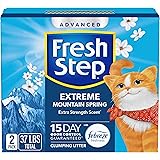Unlock the Secret to Crushing Your Neck Hump with 3 Insanely Simple Sitting Exercises That Actually Work!
Ever catch your shadow mid-stride on a sunny day and think, “Whoa, who’s that hunched-over stranger?” Yeah, that slumped posture or neck hump—also dubbed the dreaded dowager’s hump or buffalo hump—doesn’t exactly scream ‘I’m feeling fantastic,’ does it? It’s surprisingly common, creeping up in nearly 40% of older adults, thanks to a thing called kyphosis: a curvature of the upper back that’s as stubborn as it sounds. But here’s the kicker—this not-so-glamorous silhouette doesn’t have to be your forever look. Many cases are reversible, and with some targeted exercises (that you can even rock from your chair), you can straighten up and feel better fast. Curious how? Let’s dive into why neck humps show up, especially after 50, and what you can do about it. LEARN MORE

You’re taking a walk on a beautiful day and feeling great—until you turn your head and catch your shadow in silhouette. Suddenly, you’re reminded that your slumped posture or neck hump doesn’t reflect your elevated mood. You’re not alone: Kyphosis, a curvature of the upper back—also known as a dowager’s hump or a buffalo hump (ugh!)—occurs in up to 40 percent of older adults, according to a study in the Egyptian Journal of Basic and Applied Sciences. The good news is that, in many cases, this hump is reversible. Keep reading for easy neck hump exercises that actually work.
What causes a neck hump (and why it’s so common after 50)
“A neck hump refers to an increased rounding at the base of the neck where it meets the upper back and shoulder girdle—the medical term for this is the cervicothoracic junction,” explains physical therapist Jennifer Graham.
If rounding is isolated to the upper back muscles or base of the neck, it’s referred to as hyperkyphosis of the cervicothoracic spine, she continues. “But if rounding continues and becomes more pronounced in the mid- to upper-back, it may be medically classified as thoracic hyperkyphosis.”
The root causes of a neck hump can be genetic, environmental or a combination of both. While you may already know the usual suspects—looking down at phones or laptops, a sedentary lifestyle and obesity—Graham highlights some other common culprits:
- Poor posture: If your head leans forward, like when scrolling or texting, the lower and rear neck muscles must work harder to prevent your head from dropping forward, Graham says
- Degenerative disc disease: As your discs, or cushions between vertebrae, degenerate over time, Graham says can cause joint stiffness and decreased mobility that affects your posture
- Osteoporosis: Fractures or brittle bones can contribute to a change in posture
- Pregnancy: Hormonal shifts combined with the mechanics of carrying a baby can alter your posture, Graham explains
- Scheuermann’s kyphosis: This a condition in which the vertebrae develop a wedge-shaped surface that creates an asymmetrical load on the spine
- Congenital birth defects: Graham says some vertebrae may form incompletely or fuse together in utero
Regardless of the underlying cause, a neck hump can often lead to back pain, stiffness and fatigue.
3 easy neck hump exercises you can do from a chair
To improve your posture and help reduce a neck hump, Graham recommends three simple exercises—and the best part is, you can do them all from the comfort of a chair!
Chin tuck
- Place the thumb of one hand on your breastbone and the index finger on your chin
- Gently retract your chin so that your index finger is in alignment directly above your thumb
- Keep your chin slightly tucked toward your neck—don’t tilt your jaw or lift your chin toward the ceiling
- Align your shoulders and ears so your face points forward
- Hold the position for 5 to 10 seconds, then return to the starting position
- Repeat 5 to 10 times once a day
Postural alignment stretch
- Sitting or standing, place one hand on your upper belly just below your rib cage and the other hand on your breastbone
- Keeping your hands in contact with your body, gently guide the front of your body upward toward the ceiling, using your hands as a guide
- Engage your back muscles and lift your chest at the same time to straighten your mid- to upper-back
- Pull your shoulders back and down
- Tuck your chin slightly so your head aligns over your neck and your neck aligns over your upper back
- Hold this aligned posture for 5 to 10 seconds, then rest
- Repeat 5 to 10 times once a day
Shoulder rolls
- Sitting or standing comfortably, roll your shoulders up, forward and then down toward your back. Repeat this sequence 5 times
- Reverse the direction: Roll your shoulders up, back, down and then forward. Repeat 5 times
- After the shoulder rolls, focus on the mid-back area between your shoulder blades. Gently pull your shoulders back and toward each other
- Try to maintain this “shoulders back” posture and incorporate it throughout the day
More easy moves for better posture
To help keep a neck hump at bay, consider these smart tips:
- Stand whenever possible: Switch from sitting to standing for activities when you can, Graham advises.
- Try movement “snacks”: Avoid prolonged sitting for hours on end and get up to move around a few minutes at a time throughout the day.
- Optimize posture during kitchen activities: Find your optimal posture while standing or sitting by aligning your visual gaze with objects in the kitchen, Graham suggests. “Make a mental note of this alignment, or place sticky notes at eye level to remind you. If you notice yourself slouching, use these visual cues to readjust your posture and maintain proper alignment.”
Can nutrient deficiencies cause a neck hump?
While they’re not a direct cause, deficiencies in calcium and vitamin D may increase your risk of developing a neck hump. “[Nutritional] interventions begin by working with a medical practitioner to understand the root cause of your hump,” says integrative clinical nutritionist Christina Brockett, MS, CNS, LDN. Here, she offers a place to start:
- Follow a low-inflammatory diet, such as the Mediterranean Diet, rich in vegetables and low-glycemic fruits like berries
- Eliminate smoking or vaping
- Reduce or eliminate alcohol intake
- Limit refined carbohydrates
- Eat adequate amounts of protein from plant and/or animal sources
- Includes foods with healthy fats, such as fish, nuts, seeds, avocado and olives, in your diet
- Consume foods rich in vitamin D, vitamin K and calcium (for women 51+, aim for 1,000 to 1,200 mg daily)
A few powerhouse, nutrient-dense foods she recommends:
- Yogurt
- Cheese (mozzarella, feta, parmesan)
- Non-fat milk
- Fish (sardines, salmon)
- Leafy greens (collard greens, spinach, bok choy, kale)
- Broccoli
- Mushrooms
- Chicken
- Eggs
- Beans (white beans, chickpeas, red beans)
- Nuts (almonds, hazelnuts, walnuts, Brazil nuts—limit to two servings per day)
A note from Graham: The information provided is not intended for use in diagnosis, management or treatment of any medical condition and is solely for educational purposes. The above responses are not intended to replace the medical oversight of a clinician. Consultation with a physician is recommended before starting any exercise or wellness program.




















Post Comment